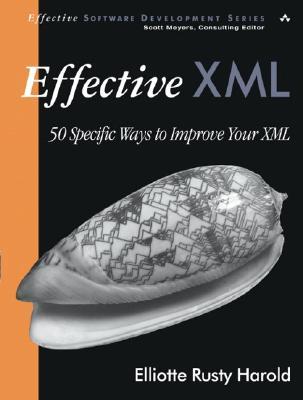

Most ebook files are in PDF format, so you can easily read them using various software such as Foxit Reader or directly on the Google Chrome browser.
Some ebook files are released by publishers in other formats such as .awz, .mobi, .epub, .fb2, etc. You may need to install specific software to read these formats on mobile/PC, such as Calibre.
Please read the tutorial at this link: https://ebookbell.com/faq
We offer FREE conversion to the popular formats you request; however, this may take some time. Therefore, right after payment, please email us, and we will try to provide the service as quickly as possible.
For some exceptional file formats or broken links (if any), please refrain from opening any disputes. Instead, email us first, and we will try to assist within a maximum of 6 hours.
EbookBell Team

4.7
26 reviews
ISBN 10: 0321150406
ISBN 13: 978-0321150400
Author: Elliotte Rusty Harold
The author teaches programmers how to use XML effectively and produce better code. Harold explains the critical rules of thumb employed by the experts to get the most out of XML and provides 50 ways to use XML to produce code that is extensible, legible and maintainable., Learning the fundamentals of XML might take a programmer a week. Learning how to use XML effectively might take a lifetime. While many books have been written that teach developers how to use the basic syntax of XML, this is the first one that really focuses on how to use XML well. This book is not a tutorial. It is not going to teach you what a tag is or how to write a DTD (Document Type Definition). Instead it's going to tell you when, why, where, and how to use such tools effectively (and equally important when not to use them).Since XML has become a fundamental underpinning of new software systems, it becomes important to ask new questions, not just what XML is, but how does one use it effectively? Which techniques work and which don't? Perhaps most importantly, which techniques appear to work at first but fail to scale as systems are further developed? This book answers these questions. It is not enough to write programs that compile and produce the expected results. It is important to write code that is extensible, legible, and maintainable. XML can be used to produce robust, extensible, maintainable systems.
Software Quality
How to Read This Book
Input Problems
Off-by-One Errors and Loop Iterations
Incorrect Algorithm or Computation
Concurrency and Timing Problems
Interface Problems
Data Problems
Fault-Tolerance Problems
Security
Time Performance
Space Performance
Portability
Maintainability
Floating-Point Arithmetic
efficient xml interchange
efficient xml
a xml
c# xml best practices
c xml
Tags: Elliotte Rusty Harold, Effective, specific, improve